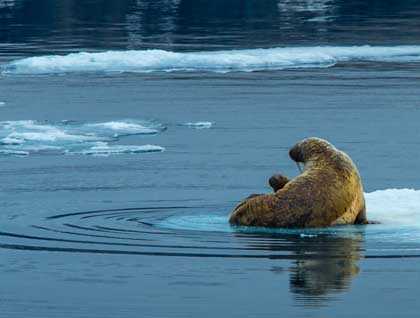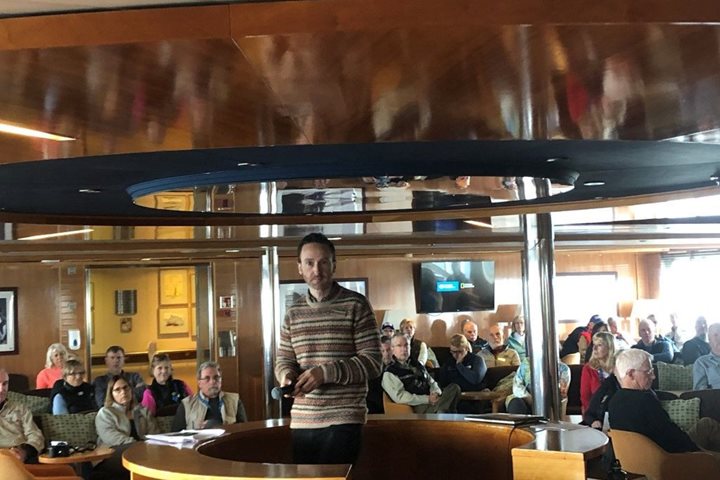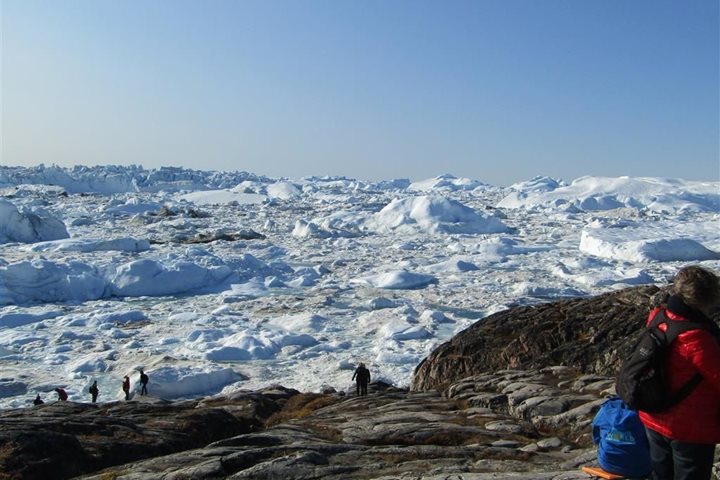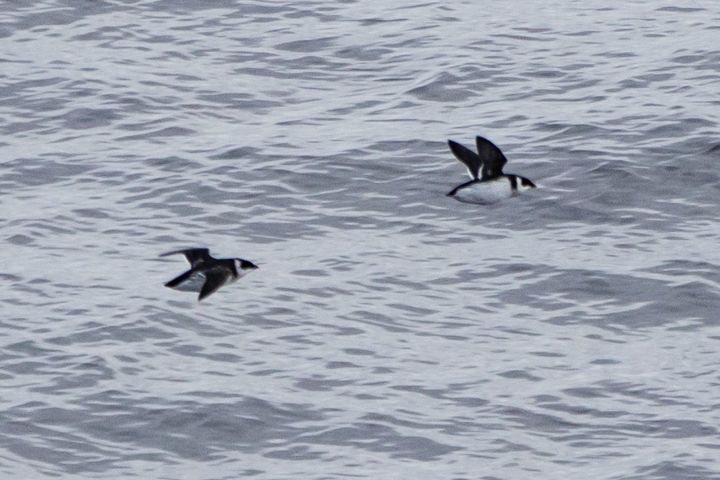Leaving Baffin Island in our wake National Geographic Explorer arrived early morning in Lancaster Sound. This famous stretch of water was the route along which Sir John Franklin sailed his two ships, HMS Erebus and Terror, with a total crew of 129 men, in late 1845 on their ill-fated expedition to find the elusive Northwest Passage. Not a single man survived to tell the tale of this tragic adventure which exacted such a high price in human life.
The waters of Lancaster Sound lap the southern shores of Devon Island where we spent the entire day observing a wide array of Arctic wildlife. Tracking along the coast, our first sighting was two walruses lying beside each other on a small ice floe. These are gregarious and tactile creatures. Their latin name is Odobenus rosmarus, the former meaning “tooth walker,” deriving from the animal’s ability to haul itself onto ice floes using its two tusks. Highly sensitive whiskers locate molluscs living in sediment on the sea bottom. Interestingly one of the animals was missing one of its tusks. These canine teeth have been much prized for centuries. In Medieval times Viking traders, who plied these waters brought walrus tusks to Ireland, Britain, and Mainland Europe. Here they were fashioned by highly skilled craftsmen into a variety of high status items. Harp seals were present in abundance with groups at a time surging in the water among the ice floes. In addition a large bearded seal reclined on a floe and “posed” for photos. But the best treat was what we thought was a lone walrus on a chip of ice, but as we got closer, the tiny head of young calf emerged from the mother: walrus Madonna and Child!
Later on in the morning we headed into the broad sweep of Maxwell Bay. The cliffs here form a dramatic backdrop of alternating strata of ancient siltstones and sandstones dating back some 500 million years. Impressive scree slopes of shattered rock fragments were banked up along its base. The process of freeze-thaw, which causes the rock to flake and shatter, is responsible for the accumulation of these fan-shaped deposits. Thick-billed murres whirred through the air as our ship manoeuvered through the fast ice which was veritably peppered with ringed seals. And hunting these were a number of the king predator of the Arctic—polar bears. A female with her two cubs was particularly captivating. Hunkered down close to seal breathing holes, bears patiently waited for a chance to catch a meal. An azure sky was reflected in the leads through the ice. So an all-round fantastic expedition day of exploration and wildlife engagement on the remote shores of Devon Island in the Canadian Arctic.









